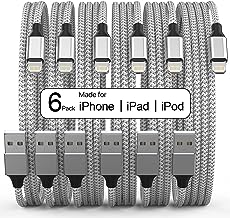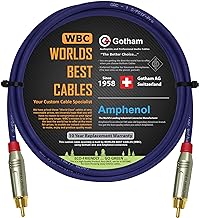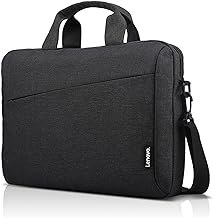5 important factors worth considering when looking for the best lora antenna
When choosing a LoRa antenna for your IoT or industrial application, it is important to carefully consider several key factors to ensure it works well with your system. Understanding the frequency range and gain of the antenna, evaluating its physical design, and checking its compatibility with your LoRa device are all important aspects to consider. These factors can greatly impact how reliable and efficient your wireless communication network will be.
In addition, where you place the antenna, how well its impedance matches your system, and the environmental conditions it will be exposed to can all play a significant role in how effective your LoRa setup will be. By understanding and focusing on these essential aspects, you can confidently navigate the world of LoRa antennas and improve the connectivity and functionality of your wireless network in the end.
See our guide to the best lora antenna.
Frequency compatibility
When you buy a LoRa antenna, it’s important to make sure it works with the frequency your LoRa devices use. If you don’t, it can cause weaker signals, shorter range, and bad connections. Choosing an antenna made for your devices’ frequency can help make your communication network more reliable and efficient.
Getting a LoRa antenna that matches your devices’ frequency not only improves signal quality but also reduces the chance of interference from other nearby wireless devices. This can make your IoT network more stable and strong, so your devices can communicate smoothly. By making sure your antenna and devices work on the same frequency, you’re making sure your IoT applications stay connected consistently and reliably.
Gain and radiation pattern
When choosing a Lora antenna, it’s important to think about factors like gain and radiation pattern to make sure it works well. Gain shows how well an antenna can send and receive signals in a certain direction, which affects how far and how well your Lora network works. Getting an antenna with higher gain can really boost how well your network connects and how strong the signal is, especially in tough places with obstacles or interference. Knowing the radiation pattern of an antenna is also important because it shows how signals are spread out. A clear radiation pattern can help reduce signal problems and make your Lora system work better, giving you a more dependable communication network for your devices.
In short, the balance of gain and radiation pattern is crucial for a Lora antenna to work well. By picking antennas with good gain and clear radiation patterns, users can make the most of their Lora networks, making sure they work smoothly and reliably. So, it’s important to choose a Lora antenna that has the right balance of gain and radiation pattern to get the best signal coverage, increase reliability, and make your IoT setups as efficient as possible.
Polarization
When you’re looking to buy Lora antennas, one important thing to consider is polarization. Choosing between linear and circular polarization can have a big impact on how well your communication system works. Linear polarization is good for communicating directly between antennas that are in the same line, with clear signal paths. Circular polarization is better for areas where signals bounce around a lot, like in cities or busy environments. To make the best choice for your project, you need to understand what you need and what the conditions are like where you’ll be using the antennas.
In the world of Lora technology, the way your antennas are polarized can make a big difference in how well your wireless network works. Linear polarization is simple and predictable, while circular polarization is versatile and can handle signal distortions better. To find the best fit for your connectivity goals, it’s important to think about your project goals and the conditions where you’ll be using the antennas. By considering these factors and keeping up with the latest technology, you can make a confident decision that will help your communication system work smoothly and efficiently.
Connector type
When you are buying a LoRa antenna, the type of connector it uses is important for how well it works with your device. It’s important to check which connector type your LoRa antenna has to make sure it works well with your equipment. SMA connectors are popular because they work with many devices and give a strong connection for sending data efficiently. RP-SMA connectors are less common but can be helpful in certain situations because they have a different kind of polarity. Make sure to check which connector type is right for your needs to avoid any problems with connecting or compatibility.
Choosing the right connector type for your LoRa antenna is not just a technical decision. It can greatly affect how well your IoT devices work. N-type connectors are good for outdoor use because they are strong and durable. On the other hand, MCX connectors are small and easy to connect, making them great for smaller devices or indoor use. Understanding the differences between each connector type and how they fit your needs is important for getting the best performance from your LoRa antenna system. By looking at the connector options and picking the right one for your setup, you can create a smooth and effective communication network that meets your IoT needs.
Size and form factor
When looking to buy a LoRa antenna, people often forget about the size and shape. While it’s tempting to focus on technical details or cost, the physical dimensions of the antenna can affect how well it works. A smaller antenna might look better or be easier to put up, but it could mean weaker signals and a limited range. On the other hand, a larger antenna might give better performance but could be bulky and not fit certain places. Finding the right balance between size and shape is important to make sure your LoRa system works well in its environment.
Also, the size and shape of a LoRa antenna can determine how versatile it is and how well it can adapt to different situations. A small and modern design could be great for inside or city areas where space is tight, while a bigger and longer antenna might be better for outdoor or long-distance communication. It’s crucial to think about what your project needs and where you’ll be using the antenna when you pick one out. By getting the right mix of size, shape, and performance, you can make sure your LoRa system works smoothly and stays reliable.
Conclusion
In today’s world of IoT and smart technology, having a good LoRa antenna is really important. A well-designed LoRa antenna is the key to making long-range, low-power communication work well. As we think about the future of how things connect, it’s clear that choosing the right technology, like the LoRa antenna, is not just an option – it’s necessary for sending data smoothly and efficiently in our connected world. Using the abilities of the LoRa antenna helps us move towards a smarter, more sustainable, and more interconnected future. Want more info on cable box for spectrum tv, check the best cable box for spectrum tv.


